UPSC DAILY CURRENT AFFAIRS (30TH SEPTEMBER, 2024)
Lothal and New Proof on its Dockyard
Syllabus :GS 1/History
In News
- Researchers from IIT Gandhinagar have discovered new evidence supporting the existence of a dock at Lothal, an important Harappan site in India.
About Lothal
- Location and Findings: Lothal, located 80 km southwest of Ahmedabad, was discovered by local villagers long before its official excavation led by archaeologist S R Rao.
- He identified the large structure as a dockyard for maritime trade, capable of sluicing ships 18-20m long.
- Lothal was believed to be a hub for maritime commerce due to the presence of seals, traded items, and stone anchors.
- Dockyard Debate: Since Lothal’s discovery, archaeologists have debated whether the 215m-long and 37m-wide structure was a dockyard.
- The Archaeological Survey of India (ASI) has supported this theory, but some scholars suggested it might have been a reservoir.
- New Evidence:The IIT-Gandhinagar study used satellite imagery to reveal old Sabarmati River channels flowing near Lothal, suggesting that boats could have sailed through to other Harappan sites like Dholavira.
- Lothal was part of a trade network extending to Mesopotamia, exporting agricultural and marine products, and importing raw materials like gemstones and metals.
- Significance: Lothal’s name means “the mound of the dead” in Gujarati. The city was a thriving trading port around 3700 BCE, and excavations between 1955 and 1960 by ASI revealed its connection to an ancient river system crucial for trade.
- Lothal was a significant city of the Indus Valley Civilization, dating back 4,500 years.
- Excavations revealed the world’s oldest known artificial dock, an acropolis, lower town, bead factory, warehouses, drainage system, and canals, highlighting its importance as a trading city.
- Artifacts suggest that Lothal engaged in trade with ancient civilizations such as Mesopotamia, Egypt, and Persia.
- Lothal has provided the largest number of antiquities in modern Indian archaeology.
- Lothal’s Decline: Water, which brought prosperity to Lothal, also led to its destruction. The site was rebuilt multiple times, and at its peak in the late 3rd millennium BCE, it may have housed 15,000 people.
- UNESCO Nomination: Lothal has been nominated to become a UNESCO World Heritage Site.
- Comparison with Dholavira: Lothal and Dholavira (in Gujarat) are two major Harappan sites in India. Both share similarities, such as the presence of large reservoirs, but differ in size and urban layout.
Government Initiatives:
- National Maritime Heritage Complex (NMHC): The Government of India is building a National Maritime Heritage Complex at Lothal to highlight India’s maritime history and global trade links dating back to the Harappan period. It will showcase Lothal’s importance as a maritime hub.
AYUSH System in India
Syllabus: GS2/Health
Context
- The Union Minister of Ayush announced the theme for the 9th Ayurveda Day, “Ayurveda Innovation for Global Health” and emphasized the importance of AYUSH.
Ayush (Ayurveda, Yoga, Naturopathy, Unani, Siddha and Homoeopathy)
- The key aim of the AYUSH Department is to provide health services under the AYUSH stream to the people.
- The AYUSH stream includes Ayurveda, Yoga and Naturopathy, Unani, Siddha, and Homoeopathy systems of healthcare and treatment.
- The Government promotes these systems through various initiatives aimed at integrating traditional medicine with modern healthcare.
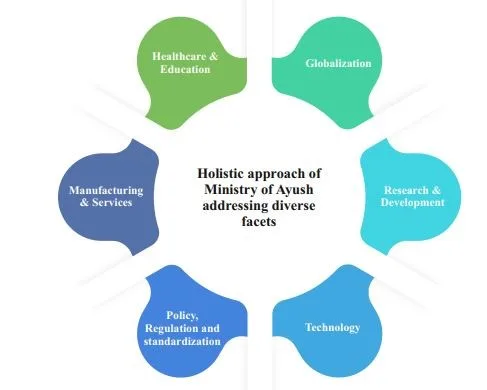
Key Features of the Ayush System:
- Ayurveda: Focuses on holistic healing using herbs, diet, and lifestyle changes. It emphasizes balance in body, mind, and spirit.
- Yoga and Naturopathy: Yoga promotes physical and mental well-being through postures, breathing exercises, and meditation. Naturopathy emphasizes natural treatments and lifestyle changes.
- Unani: Originating from Greek medicine, it uses herbal remedies and emphasizes balance among the body’s elements.
- Siddha: A traditional healing system from South India, focusing on alchemy and herbal medicine.
- Homoeopathy: Based on the principle of “like cures like,” it uses highly diluted substances to treat various ailments.
Growth of the Ayush Sector
- India’s Ayush market size is 43.4 billion USD (₹ 1931 Billion – Manufacturing, ₹1667 Billion- Services).
- Total Ayush export of India: US$1.54 billion (₹114 billion).
- Ayush and Herbal products / medicines are exported to more than 150 countries.
- Presently, Ayurveda is recognized as a system of Traditional Medicine in more than 30 countries.
- Ayush Export Promotion Council (AYUSHEXCIL): It has been established to promote Ayush products and services globally by the Ministry of Ayush and supported by the Ministry of Commerce, GOI.
- Ayush Visa: The Ministry of Home Affairs incorporated a new visa category, “Ayush Visa” for foreign nationals seeking medical treatment like therapeutic care, wellness and yoga in India.
- So far, more than 50 products (Unani and Ayurveda) have been registered in 08 countries namely Kenya, USA, Russia, Latvia, Canada, Oman, Tajikistan and Sri Lanka under the IC scheme of the Ministry.
- Global Recognition: The Ministry of Ayush and the World Health Organization has established the World’s first and the only Global Traditional Medicine Centre (WHO GTMC) in Jamnagar, India.
- The UN General Assembly in 2014, unanimously adopted a resolution for observing 21st June every year as the International Day of Yoga.
Government Initiatives
- Ministry of Ayush: Established in 2014, this ministry is dedicated to promoting traditional medicine, ensuring quality control, and regulating practices.
- NAM: Government is implementing the Centrally Sponsored Scheme of National AYUSH Mission (NAM) in the country through State and UT governments for promotion and development of AYUSH systems.
- Under the concept of AYUSH Gram, AYUSH based lifestyles are promoted through behavioral change communication, training of village health workers towards identification and use of local medicinal herbs and provision of AYUSH health services.
- Ayurswasthya Yojana: The Ministry of Ayush implemented a Central Sector Scheme of Ayurswasthya Yojana since FY 2021-22.
- The Scheme has 02 components viz.- AYUSH and public Health and Centre of Excellence (CoE).
- Under the AYUSH and public Health Component there is provision of distribution of AYUSH medicines and organize free medical camps.
- Information, Education and Communication (IEC) in AYUSH: Under the scheme, the Ministry undertakes promotional activities like organization of AROGYA fairs at State and National level; multimedia campaigns; preparation and distribution of publicity material including audio visual material, etc.
- Promotion of International Cooperation: The Ministry deputes AYUSH experts to foreign countries to participate in international meetings, conferences, training programmes, for promotion and propagation of AYUSH Systems.
- Incentives are provided to AYUSH drug manufacturers, entrepreneurs, AYUSH institutions, etc. for participating in International exhibitions for generating awareness amongst the public about the AYUSH systems of medicine and; registration of AYUSH products with regulatory authorities of the foreign countries.
- Budget Allocation:
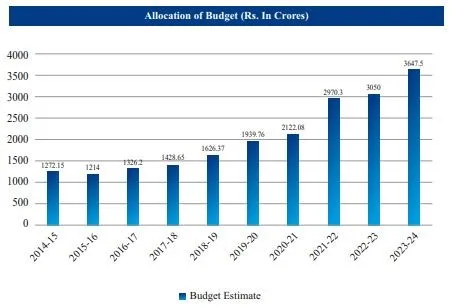
Union Cabinet Approves National Centre of Excellence for AVGC
Syllabus: GS3/ Economy
In Context
- The Union Cabinet recently approved the establishment of a National Centre of Excellence (NCoE) for Animation, Visual Effects, Gaming, Comics, and Extended Reality (AVGC-XR) in Mumbai.
About
- The establishment of the NCoE was announced in the 2022-23 budget, which proposed the creation of an AVGC task force in the country.
- India’s animation sector is witnessing remarkable growth, driven by increasing demand for films, visual effects (VFX), gaming animation and engaging mobile content.
- According to the FICCI-EY 2024 report, India now boasts the second-largest anime fan base globally and is projected to contribute 60% to the worldwide growth in anime interest in the coming years.
Key Points about NCoE
- NCoE will be set up as a Section 8 Company under the Companies Act, 2013.
- NCoE AVGC aims at creating a world class talent pool in India to cater to the Indian as well as global entertainment industry.
- Provisionally named the Indian Institute for Immersive Creators (IIIC).
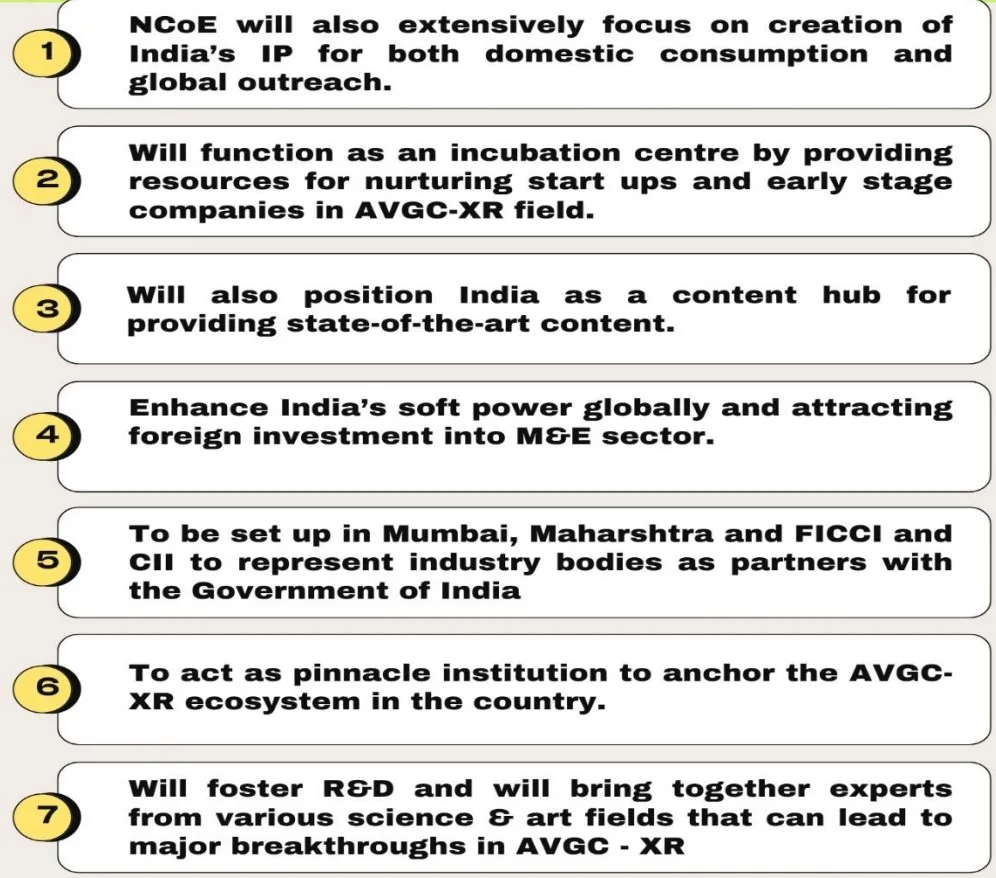
Benefits of NCoE
- Skill Development: NCoE provides training programs that equip individuals with advanced skills in animation, gaming, visual effects, and XR technologies, fostering a highly skilled workforce.
- Innovation Hub: The center promotes research and innovation in AVGC and XR technologies, driving new developments and creative solutions in these rapidly evolving fields.
- Industry Growth: By offering resources, infrastructure, and networking opportunities, NCoE helps boost the AVGC sector, enabling Indian companies to compete globally and increasing job creation.
- Global Competitiveness & boosting soft power: The center strengthens India’s position as a global hub for AVGC and XR industries, attracting foreign investments and projects.
- Economic Impact: Employment creation, increased revenue from exports and domestic markets.
SC Raps Delhi Air Quality Panel Over Pollution
Syllabus: GS3/ Environment
Context
- The Supreme Court questioned the effectiveness of the Commission for Air Quality Management (CAQM) in controlling air pollution caused by stubble burning in North India.
Background
- Recently the air quality in Delhi slipped into the ‘poor’ category, signaling the imminent arrival of North India’s bad air season.
- The Supreme court criticized the CAQM for non-compliance with its mandate, saying the commission has vast powers, such as closing down polluting industries, but hasn’t fully used them.
- Also no specific committee had been formed to address stubble burning, which is a major cause of pollution.
Reason for higher pollution level in winters
- Seasonal Impact: As the monsoon ends, weather conditions like temperature inversion (where warm air traps cooler air near the surface) prevent pollutants from dispersing, causing hazardous pollution levels.
- Sources of Pollution: Pollution in Delhi comes from many sources, such as:
- Biomass burning for cooking in rural areas.
- Trash burning and vehicular emissions in cities.
- Industrial pollution.
- Stubble burning in nearby states like Haryana and Punjab.
- Firecrackers during festivals like Diwali.
Concerns with the existing solutions
- Smog Towers: These structures reduce pollution only in a small area and require electricity, which might lead to more emissions.
- Water Guns: These have limited impact on overall air quality.
- Odd-Even Road Sharing: While it reduces traffic temporarily, the long-term effect is minimal.
- Cloud Seeding: This method uses chemicals, such as silver iodide, to create artificial rain, but it can have environmental risks.
- Water vapor that would naturally fall elsewhere is manipulated, which could cause droughts in other regions.
- Additionally, chemicals used can accumulate in soil and water, potentially harming ecosystems.
Way Ahead
- Better Coordination: Agencies responsible for transportation, industry, agriculture, and urban planning need to work together.
- The problem of stubble burning requires cooperation between farmers, policymakers, and regulators across state borders.
- Capacity Building: Policymakers, researchers, regulators, and industries should collaborate and critically evaluate solutions that are truly in the public interest.
- Comprehensive Air Quality Monitoring: While cities like Delhi get most of the attention, pollution is also a serious problem in rural and industrial areas. Air quality monitoring should cover all regions.
- Address root cause: Solutions like cloud seeding and smog towers serve as superficial actions. Real solutions need to address the root causes of pollution rather than offer temporary relief.
Concluding remarks
- The scale of the problem demands long-term solutions, but the response has often been characterized by short-term, optics-driven measures.
- India needs a multi-decadal, multi-sectoral effort grounded in scientific thinking and committed to sustained, collaborative action.
| Commission for Air Quality Management (CAQM) – CAQM was constituted under the Commission for Air Quality Management in National Capital Region and Adjoining Areas Act, 2021. – Objective: The Act provides for the constitution of a Commission for better coordination, research, identification, and resolution of problems related to air quality in the National Capital Region (NCR) and adjoining areas. Powers of the Commission include; 1. Restricting activities influencing air quality, 2. Preparing codes and guidelines to prevent and control air pollution, 3. Issuing directions on matters including inspections, or regulation which will be binding on the concerned person or authority. 4. The Commission may impose and collect environmental compensation from farmers causing pollution by stubble burning prescribed by the central government. 5. The Commission issues orders to combat air pollution in NCR under the Graded Response Action Plan (GRAP). – In case of any conflict, the orders or directions of the Commission will prevail over the orders of the respective state governments, the Central Pollution Control Board (CPCB), state PCBs, and state-level statutory bodies. |
Draft Guidelines on Passive Euthanasia
Syllabus: GS2/Polity/Health
Context
- The Ministry of Health and Family Welfare released draft guidelines for the withdrawal of life support in terminally ill patients.
Euthanasia
- Euthanasia is the act of deliberately ending a person’s life to eliminate pain or suffering
- Ethicists differentiate between active and passive euthanasia.
- Passive euthanasia entails the deliberate decision to withhold or withdraw medical interventions, like life support, with the aim of permitting a person’s natural death.
- Active Euthanasia is the intentional act of killing a terminally ill patient on voluntary request, by the direct intervention of a doctor for the purpose of the good of the patient. It is illegal in India.
Draft Guidelines
- Definition of The Terminal Illness: It has been defined as an irreversible or incurable condition from which death is inevitable in the foreseeable future.
- Severe devastating traumatic brain injury which shows no recovery after 72 hours or more is also included.
- The withdrawal of life support can be done under the four conditions:
- The individual must be declared brain stem dead as per the Transplantation of Human Organs (THOA) Act.
- Medical prognostication must indicate that the patient’s condition is advanced and unlikely to benefit from aggressive therapeutic interventions.
- The patient or surrogate must document an informed refusal, following prognostic awareness, to continue life support.
- There must be compliance with procedures prescribed by the Supreme Court.
- Legal Principles: The legal principles outlined by the Supreme Court state an adult patient capable of taking healthcare decisions may refuse LST even if it results in death.
- LST may be withheld or withdrawn lawfully under certain conditions from persons who no longer retain decision-making capacity, based on the fundamental right to Autonomy, Privacy and Dignity.
- Advance Medical Directives (AMD) that meets specified requirements is a legally valid document.
- Mechanism: Proposals should be made by consensus among a group of at least 3 physicians who form the Primary Medical Board (PMB).
- The PMB must explain the illness, the medical treatment available, alternative forms of treatment, and the consequences of remaining treated and untreated to fully inform the surrogate.
- A Secondary Medical Board (SMB) of 3 physicians with one appointee by the Chief Medical Officer (CMO) of the district must validate the decision by the PMB.
- Clinical Ethics Committee: Constituted by hospitals for audit, oversight, & conflict resolution.
Legal Stance
- The Supreme Court had in 2018 legalised passive euthanasia, contingent upon the person having a “living will”.
- SC held that the ‘right to die with dignity’ forms a part of the right to life under Article 21 of the Constitution of India.
- A living will is a written document that specifies the actions to be taken if the person is unable to make their own medical decisions in the future.
- Goa is the first state that has formalised, to some extent, the implementation of directives issued by the Supreme Court.
FACTS IN NEWS
The Rann of Kutch
Syllabus: GS1/ Geography, GS3/Environment
Context
- The Little Rann of Kutch in Gujarat faces threats from human activity and environmental issues.
Rann of Kutch
- The Rann of Kutch is a vast salt marsh region straddling the India-Pakistan border, primarily located in Gujarat, India, with a smaller portion extending into Pakistan’s Sindh province. It started forming about 150-200 million years ago.
- It is divided into two parts: the Great Rann of Kutch to the north and the Little Rann of Kutch to the southeast.
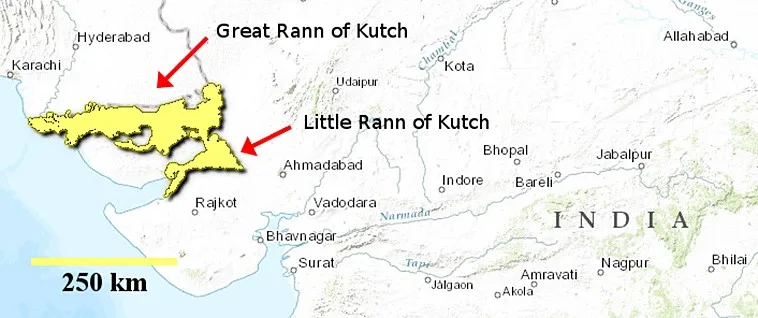
- The Rann of Kutch is a unique ecosystem, bordered by the Thar Desert to the north and the Arabian Sea to the south.
- Originally, waters from the Arabian Sea entered this region. Later, geological shifts led to the formation of a landmass that separated the Kutch basin from the sea.
- During monsoons, the Little Rann turns into a shallow wetland. About 75 elevated pieces of land turn into islands, called bets by the local Agariya and Maldhari communities.
- Historically, the region has been inhabited since the Neolithic period, with influences from the Indus Valley Civilization and various Indian empires like the Maurya and Gupta dynasties.
Human activity
- Salt Production: The region is significant for salt production, providing 30% of India’s total salt output.
- Threat: Large-scale cattle grazing harms the delicate balance of the ecosystem.
- Further, irrigation canals that bring water to the southern rim of the Little Rann add salinity to the soil.
Swachh Bharat Mission Urban 2.0
Syllabus: GS2/ Governance
Context
- Three years into the five-year Swachh Bharat Mission Urban 2.0, big cities have cleared less than half of their legacy landfill sites, with only 38% of dumped waste remediated.
Swachh Bharat Mission (SBM-U) 2.0
- It was launched in 2021 for a period of five years with a vision of achieving Garbage Free Status for all cities through
- 100% source segregation,
- Door to door collection and
- Scientific management of all fractions of waste including safe disposal in scientific landfills.
- To ensure that no untreated faecal sludge or used water is discharged into the environment, a new component of Used Water Management (UWM) for Cities with less than one lakh population has been included.
- It also aims at remediation of all legacy dumpsites and converting them into green zones by 2025-2026.
Government Initiatives
- 6-star rating for garbage-free cities under a new star-rating protocol.
- Integration of Urban Swachh Survekshan (Cleanliness Survey) for ranking cities on various sanitation and cleanliness parameters.
- Enhanced focus on the 3Rs: Reduce, Reuse, and Recycle.
Marburg Viral Disease
Syllabus: GS2/ Health
In News
- Many people have died in Rwanda following an outbreak of the Marburg Viral Disease.
About Marburg Viral Disease
- It is a severe, highly infectious hemorrhagic fever similar to Ebola belongs to the filovirus family.
- The natural host of the Marburg virus is the African fruit bat, which carries the pathogen. The virus can be transmitted from bats to primates, including humans.
- The virus was first identified in 1967 in Marburg, Germany, after workers contracted it from infected green monkeys.
- There are currently no approved vaccines or antiviral treatments.
IBSA
Syllabus: GS2/International Groupings
Context
- Recently a meeting was held under the framework of the three-nation grouping IBSA (India-Brazil-South Africa) on actions against all UN-listed terrorists and terror entities.
IBSA
- IBSA is a unique Forum which brings together India, Brazil and South Africa established in 2003 after the Brasilia Declaration.
- It has the rotating presidency of India, Brazil, South Africa.
- The grouping completed 20 years in 2023.
- Aim: to contribute to the construction of a new international architecture;
- bring their voice together on global issues;
- deepen their ties in various areas.
- The IBSA Fund was established in 2004 and became operational in 2006, supports projects on a demand-driven basis through partnerships with local governments, national institutions and implementing partners.
PM Surya Ghar: Muft Bijli Yojana
Syllabus : GS 3/Environment
In News
- PM Surya Ghar: Muft Bijli Yojana has seen over 1.28 crore registrations and 14.84 lakh applications, indicating significant interest.
The PM Surya Ghar: Muft Bijli Yojana
- It was launched by Prime Minister Narendra Modi on February 15, 2024, is a significant initiative aimed at transforming India’s energy landscape by providing free electricity to households.
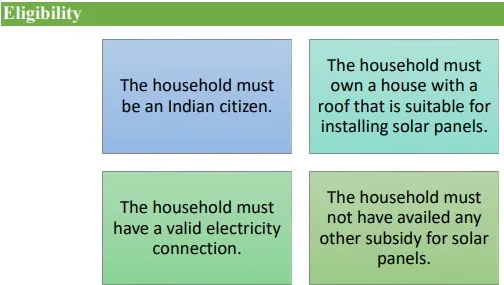
- The initiative offers a substantial subsidy of up to 40% on the cost of installing solar panels on rooftops, encouraging households to adopt solar energy.
- The scheme is designed to benefit 1 crore households across the country.
- It is projected to generate substantial savings for the government, estimated at Rs. 75,000 crores annually in electricity costs.
- This initiative emphasizes the government’s commitment to promoting sustainable energy and ensuring energy access for all citizens.
Govt. Lift Ban on Export of Non-Basmati White Rice
Syllabus: GS3/Economy/Agriculture
Context
- The Union Government has lifted the ban on export of Non-Basmati White Rice.
- The export ban had come amid a marginal dip in rice production and the looming threat of an erratic monsoon last year.
Key Facts
- China is the largest producer of rice in the world, followed by India, Bangladesh and Indonesia.
- India, along with China, accounts for over half of the world’s rice production.
- China, however, is also the biggest consumer of rice, leaving little for exports.
- India is the world’s largest exporter of rice, accounting for 33 percent of the world’s total rice exports during 2023.
- Two east Asian countries—Thailand and Vietnam—are the two main competitors of India in the global rice market.
- In 2023, the combined rice export of these two countries was almost equal to Indian exports.
Dark Matter
Syllabus: GS3/ S&T
In context
- Researchers from the LUX-ZEPLIN (LZ) experiment, located 1.5 km underground in South Dakota, USA, announced a significant development in the search for dark matter.
About
- While they did not identify the particle responsible for dark matter, they were able to eliminate certain possibilities, continuing decades of similar null results from global experiments like XENON-nT (Italy) and PandaX-4T (China).
Dark Matter
- Dark Matter is a hypothetical form of matter that makes up about 27% of the universe’s mass-energy content but remains invisible and does not emit, absorb, or reflect light.
- Despite its invisibility, its existence is inferred through its gravitational effects on visible matter, such as stars and galaxies.
Importance of Dark Matter
- Dark matter helps to explain the distribution of matter in galaxies, clusters of galaxies, and the large-scale cosmic web.
- It plays a pivotal role in holding galaxies together since the gravitational effects observed cannot be explained by visible matter alone.
- Studying dark matter is essential for a complete understanding of the universe’s formation, structure, and future.
Dark Energy
- Dark energy is thought to be responsible for the accelerating expansion of the universe, making up 68% of its total energy content.
- It is a mysterious force that exerts negative pressure, pushing galaxies and matter away from each other.
- This phenomenon explains why the universe is expanding at an increasing rate, as observed in distant supernovae and galaxy clusters.
Thermobaric Weapons
Syllabus: GS3/ Defence
Context
- Russia’s use of ODAB-1500 thermobaric weapons in Ukraine has drawn significant attention due to their devastating effects.
What Are Thermobaric Weapons?
- Thermobaric weapons, also known as “vacuum bombs” or “enhanced blast weapons,” rely on the atmosphere’s oxygen to fuel their explosive power.
- Unlike conventional explosives that contain both fuel and oxidizer, thermobaric bombs release a fuel cloud, which, when ignited, causes a high-temperature explosion.
- This explosion generates a blast wave of immense pressure, followed by a rapid vacuum effect as the oxygen in the vicinity is consumed.
- In 2001, the United States deployed these weapons to target al-Qaeda forces hiding in the caves of the Tora Bora mountains.
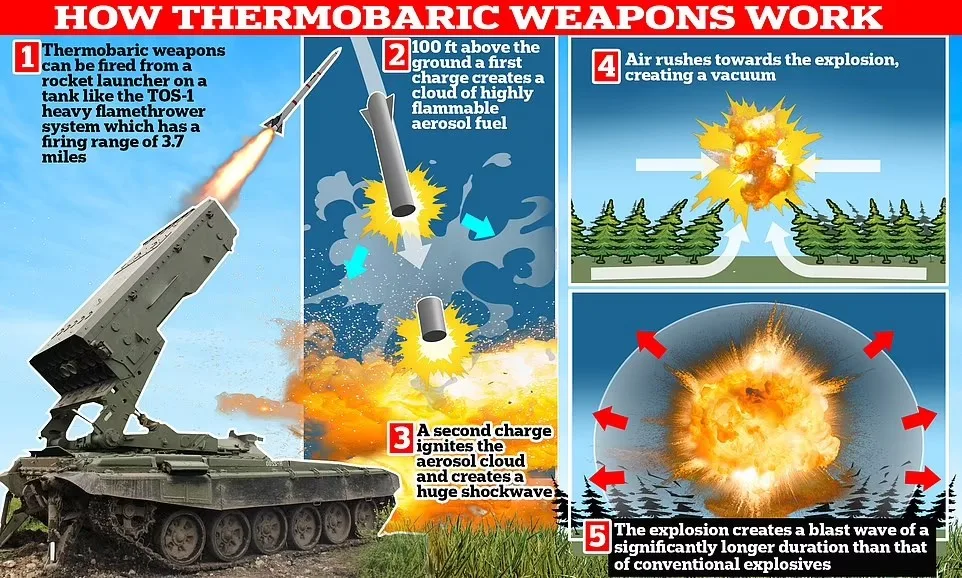
Impact
- The combination of overpressure and vacuum makes these weapons destructive in enclosed spaces such as bunkers, buildings, and tunnels.
- The shockwave produced by thermobaric bombs can destroy structures, while the blast’s pressure differential causes catastrophic damage to the human body, including rupturing organs and lungs.
- There are no international laws specifically banning their use, but if a country uses them to target civilian populations in built-up areas, schools or hospitals, then it could be convicted of a war crime under the Hague Conventions of 1899 and 1907.
Parivesh 2.0 Portal
Syllabus : GS 3/Environment
In News
- The Ministry of Environment, Forest and Climate Change (MoEFCC) received only 32 applications to register exotic species on the Parivesh 2.0 portal.
About Parivesh
- PARIVESH stands for (Pro-Active Responsive Facilitation by Interactive and Virtuous Environmental Singlewindow Hub).
- Parivesh was originally launched in 2018 to provide a single window for various environmental, forest, wildlife, and coastal regulation zone clearances.
- Parivesh 2.0 is an enhanced version designed to improve efficiency, transparency, and accountability in the approval process.
- It provides a single platform for environmental clearances, forest clearances, wildlife clearances, and coastal regulation zone clearances.
- Parivesh 2.0 introduces a mobile app that allows project proponents to track their clearance applications and compliance submissions.
Significance of Parivesh 2.0
- Improves Ease of Doing Business
- Ensures better environmental governance
- Reduces Delay in Clearances
Kerala’s ‘RRR Champion’ Initiative
Syllabus :GS 3/Environment
In News
- Prime Minister Narendra Modi praised the ‘Waste to Wealth’ mantra and its success through the Swachh Bharat Mission, highlighting the importance of ‘Reduce, Reuse, Recycle.’
RRR Champion’ Initiative
- The Prime Minister mentioned Mr. Subramanian, a 74-year-old from Kozhikode, Kerala, who has repaired over 23,000 chairs, making them reusable.
- Mr. Subramanian is known as the ‘Reduce, Reuse, Recycle’ (RRR) Champion for his unique efforts.
- His work can be seen in various offices such as Kozhikode Civil Station, PWD, LIC, and BSNL.
- The principles of 3R – Reduce ,Reuse and Recycle – have been an integral part of Indian culture.
- Preserving biodiversity, sustainable living and peaceful coexistence with nature have been the guiding philosophy of the Indian way of life and have always been part of the teachings of ancient scriptures.
